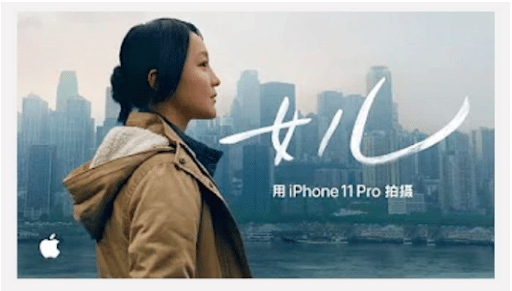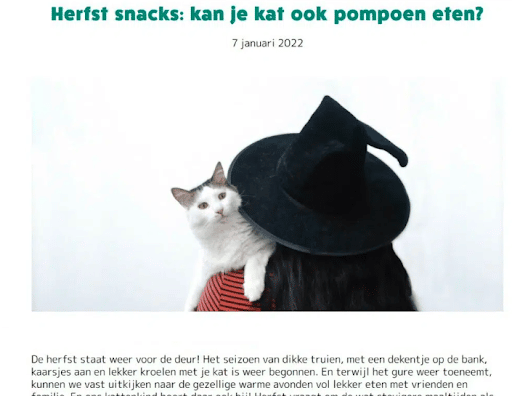How can you reach new markets in languages you don’t speak? And how can you accurately portray your brand voice in different countries? The answer lies in high-quality multilingual copywriting.
Keep reading to learn how multilingual copywriters and multilingual content agencies can adapt your ads for new markets. We’ll also explain the differences between standard translations vs. “transcreation” and the importance of audience research and planning.
See also: Marketing localization: Why investing in quality pays off
What is multilingual copywriting?
Multilingual copywriting for advertising is a creative way of selling a product or service in various languages. Only 18% of consumers buy products online in a foreign language, which is why native language marketing is a key strategy for market growth.
A multilingual blog on your website is a great way to reach customers in new markets. But you need to make sure each piece of multilingual content is accurately adapted for your target audiences, not just in terms of their language but also culture, timeliness and relevance.
That’s why using automated translations to quickly turn, for example, an English blog post into a German piece for the Swiss market could be a recipe for disaster if you don’t check it before publishing. Machine translation can be a good starting point, but it always needs a final edit by a native-level speaker.
Direct translations rarely work. Just take a look back at the 1993 American Dairy Association’s “Got Milk?” campaign, as an example. They soon realized that translating it straight into the Spanish “¿Tienes leche?” had a completely different meaning, since they were asking their customers if they were lactating!
See also: Content marketing translation: A fast way to scale
You need to speak to your customers in their own language and craft original messages just for them, while maintaining your brand’s authentic voice. To achieve this, you need to localize your content. And for that, you really need to work with native-level writers or a full-on multilingual content agency like VeraContent.
Another service you should consider investing in is transcreation, which refers to a mix of translation, adaptation and content creation.
Both localization and transcreation are necessary for creating compelling multilingual content marketing copy.
See also: Choosing the right transcreation agency for your business
Multilingual copywriting for international advertisers: What you need to know


An important element of speaking to your customers in their own voice is finding out who those customers actually are. You can’t assume what works in your home market will work in the new market.
Market research and asking people on the ground is always a wise move before branching out.
See also: International audience research methods: How to reach new markets effectively
Once you’ve researched and understood your audience, you’ll need to think about what their problem areas are—and how your product or service can fill that gap in their lives.
Apple is a great example of understanding their target audience. By focusing on value (not price), product placement and the use of striking imagery, Apple has accessed a design-loving market across the globe. The concept of good, simplistic design is global and rarely influenced by individual culture, making it easier to adapt to international audiences.
Take for example their “Shot on iPhone” series. This simple campaign is easily translated for different markets.

You might not have Apple’s budget for multilingual advertising copywriting, but you could, for example, tap into the local influencer niche of your new market and suggest they try your product or service for free. Asking for a review in exchange would be a great way of launching your brand into local regions.
Download our free interactive worksheet to help your content teams adapt your content strategy to local markets:

How to hire a multilingual copywriter

Of course there’s only so much you can do from afar. Hiring multilingual copywriters or an agency will make all the difference to the transcreation and localization of your copy. You need to find professionals who have in-depth knowledge of your target markets and, at the same time, are able to transmit your brand’s voice in the most authentic way.
“Having a human behind your content does good things for your business. It makes people feel more connected with your brand, and that they can trust you.”
Meag Gardner, previously VeraContent’s senior content editor
To hire the perfect multilingual copywriter, first make sure you have the following elements:
- Your niche/industry—so you can find a writer who’s comfortable and experienced working in it.
- The style of your brand—is it professional or a bit cheeky?
- Your budget. If you don’t have a lot of money, it may be worth hiring a less experienced copywriter who can grow and learn while working with you.
Next, work on the copywriter job description:
- Using the information from the first step, write a clear description explaining your company’s niche and define the value and style of the company. The clearer you are about the kind of writer you need, the more likely you are to find the right fit.
- Ask for a cover letter and a portfolio of relevant work.
- Post the description on job sites like LinkedIn or ask your network for referrals.
Once you have applications from candidates, it’s a question of pinpointing the perfect match. Rule out any applications with poorly written cover letters or who haven’t followed the application guidelines. Then select around five candidates whose writing style appeals to you and fits your brand.
Online interviews with your selected applicants are a good way of honing down on your selection. And if you really can’t decide, you could always hire more than one of the candidates and pay them for a trial run.
At VeraContent, we’re experts at finding the best multilingual copywriters for the job. We’re constantly adding to our database of translators and writers so, if you’re struggling to find a good writer, reach out to us!
See also: Marketing translators: Ultimate hiring manager’s guide
Multilingual copywriting best practices

You’re all set with the perfect writers for each target market, but what about multilingual copywriting best practices? Keep the following tips in mind to ensure that your business has the best chance of success in new markets:
- Create a thoroughly researched multilingual editorial calendar with clear dates for content planning, creation and publication. Remember to consider local holidays and time zones.
- Have clear CTAs in all articles but be mindful of the new market. In the US, CTAs tend to be prominent while in a market like Germany, they tend to be a bit more subtle. See also: US vs. German marketing content: Why localization is key
- SEO considerations are crucial. A keyword in English won’t necessarily have a direct translation in, say Spanish. Make sure your copywriter does their research or that you hire additional international SEO services.
- Keep in mind that two countries who speak the same language don’t necessarily share the same values. The German-speaking population of Switzerland tends to spend more on luxury travel than Austria and Germany, for example.
- Repurposing and translating content only makes sense when the subject matter is relevant to the new market. Obviously an article about thermal wear won’t make much sense for a Caribbean audience—see below for a further example.
Below is an example of an article VeraContent wrote in English and then translated into Dutch for Spanish brand Sanicat about whether pumpkin is a safe vegetable for cats to eat. Since pumpkins aren’t very common in the Netherlands, they also included other vegetables—a perfect illustration of localization at work!

Pro tip: Remember that B2B copywriting is typically written in a more formal way than content for B2C websites.
Get the help of professional multilingual copywriting services
With global marketing localization as the key for expanding your business abroad, there’s never been a better time to start investing in multilingual copywriting.
If it all seems a bit too overwhelming, don’t hesitate to reach out to us at VeraContent. We’ll take your brand to the next level, making sure nothing gets lost in translation. Get in touch to find out if you qualify for a free content consultation.

